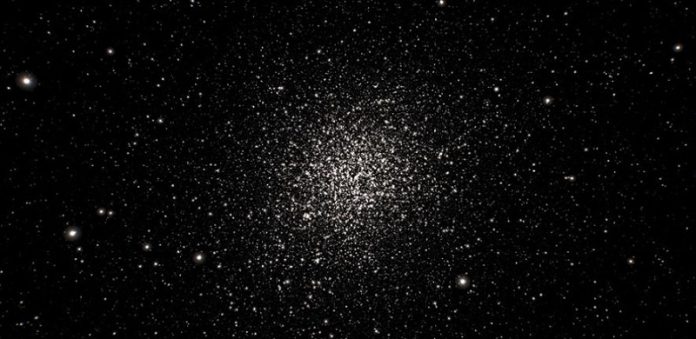
In an exciting journey of exploring our cosmic backyard and beyond, the European Space Agency’s Gaia mission has given us a vibrant palette of stellar discoveries that paints a deeper, more vibrant picture of our universe.
Gaia, not just a satellite but a cosmic detective, has unfolded mysteries by identifying new stars, discovering potential cosmic lenses, and precisely mapping asteroids in our Solar System, all while sketching a detailed celestial map of our galaxy and distant cosmos.
Let’s unwrap the treasures hidden in the most recent revelations from Gaia!
Discovering a Glittering Swarm of New Stars
Imagine a cluster of stars, so huge and sparkling that it looks like a celestial diamond.
Gaia peeked into Omega Centauri, the largest cluster of stars visible from our planet and found over half a million new stars that were previously hidden from our eyes!
This is similar to finding a new set of glimmering gems in an already magnificent jewelry box. Globular clusters, like Omega Centauri, are ancient, and studying them allows us to wander back in time and understand our cosmic history better.
Peering Through Cosmic Magnifying Glasses
Gravitational lenses, a fascinating phenomenon where light from distant objects, like quasars, gets bent and magnified by the gravity of a massive object (such as a galaxy) sitting in between us and the distant light source.
It’s like nature’s magnifying glass, and finding them can give us glimpses into the very early universe.
Even though Gaia wasn’t initially set up to delve into cosmology, it has discovered over 380 potential cosmic lenses, offering an unexpected and invaluable tool to further peer into the ancient universe.
Some of these cosmic magnifying glasses even create an “Einstein cross,” a rare spectacle where the light forms a cross shape in the sky.
Pinpointing Wandering Asteroids
Gaia has also been busy charting the course of more than 150,000 asteroids within our own Solar System, offering precious data that can help us understand their precise orbits.
This is not only crucial for studying these rocky bodies themselves but also ensuring that we can track their paths accurately for the safety and success of future space missions.
Painting the Stellar Lifecycles
The journey doesn’t stop here. Gaia has also investigated the life stories of stars, particularly pulsating red giant stars.
By understanding how these stars pulsate and change over time, scientists can understand the lives of stars, including their birth, evolution, and death, in greater detail.
This data acts as a time machine, providing insights into the historical tapestry of our cosmos.
Gaia’s Ongoing Celestial Saga
Gaia has already gifted us a spectacular data release, and the mission isn’t over!
The next grand reveal of data is expected by the end of 2025, where even more celestial wonders and cosmic secrets will be shared.
From refining our understanding of stars to uncovering potential exoplanet candidates, Gaia DR4, the upcoming data release, promises to further unravel the majestic tapestry of our universe.
In essence, the Gaia mission isn’t just mapping the stars. It is revealing the stories of the cosmos, from our local astronomical neighborhood in the Solar System to the distant, ancient light of quasars.
As we await more data, we continue to explore and marvel at the cosmic wonders and mysteries that Gaia unfolds, deepening our connection and understanding of the universe that we are intrinsically a part of.
Follow us on Twitter for more articles about this topic.



